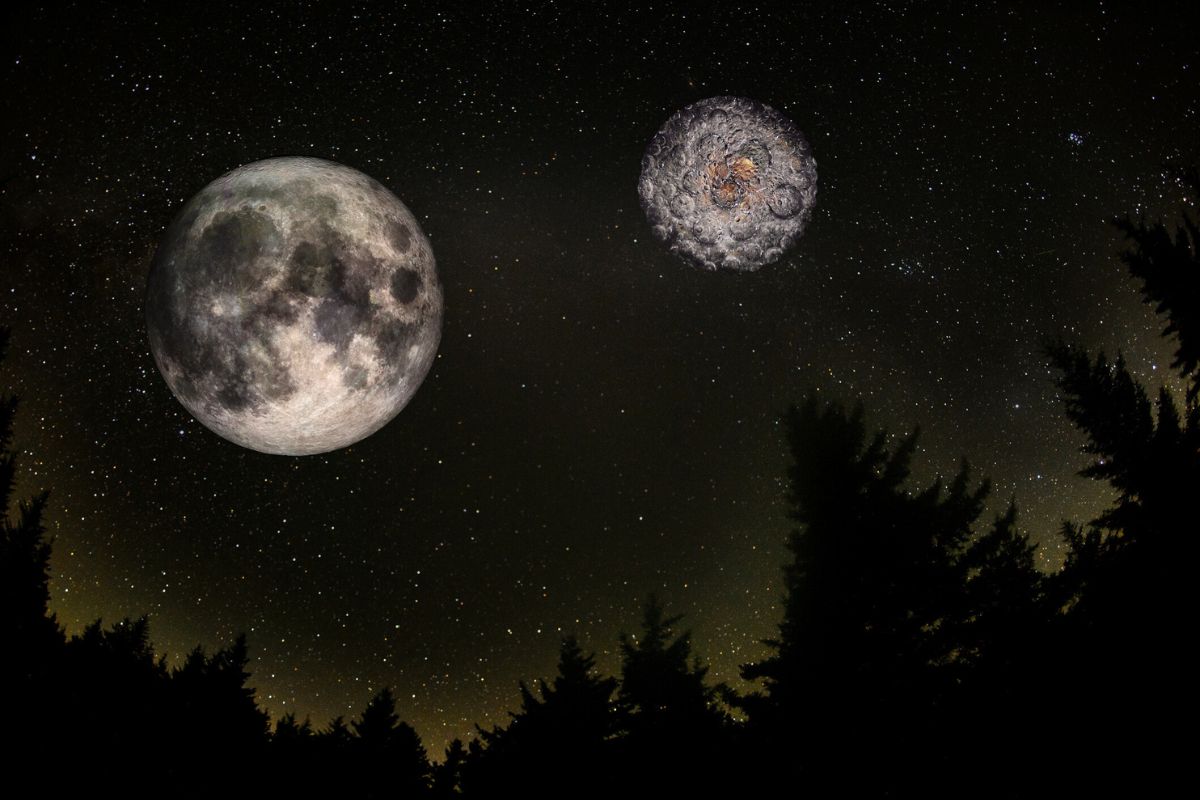Astronomers just found clues about a mysterious second moon of Earth

Most of us grew up believing Earth has just one moon. But astronomers say there’s a strange little space rock, often dubbed our “second moon,” that has been quietly keeping us company. And now, new research may have finally revealed where it came from.
Meet Kamoʻoalewa, Earth’s cosmic neighbor
The object, officially named 469219 Kamoʻoalewa, isn’t a true satellite like the Moon. Instead, it’s what scientists call a quasi-satellite—an asteroid that orbits the Sun but moves in sync with Earth, creating the illusion of circling our planet.
Kamoʻoalewa is tiny compared to the Moon, measuring only about 130 to 330 feet (40–100 meters) across. Remarkably, it takes just 28 minutes to complete one spin on its axis. For years, astronomers assumed it was simply one of the countless near-Earth asteroids that drift in from the asteroid belt between Mars and Jupiter. But new evidence suggests it may have a much closer connection.
A fragment blasted off the Moon
A study published in Nature Astronomy has revealed that Kamoʻoalewa contains silicates, the same minerals found in samples of lunar rock collected by astronauts. Computer simulations further suggest that its shape matches what you’d expect from a chunk of the Moon blasted away during a massive impact.
Researchers believe this impact created the Giordano Bruno crater—the youngest large crater on the Moon. The collision was so powerful that instead of falling back under lunar gravity, this fragment escaped into space, eventually settling into its unusual Earth-like orbit.
Why it survived so long
One of the mysteries of Kamoʻoalewa is why it’s still around. Scientists explain that because it likely came from a recent lunar impact, it hasn’t had time to drift away or be shattered by other collisions. Older fragments would have long since disappeared.
Still, astronomers emphasize that Kamoʻoalewa isn’t a “real” moon. It doesn’t affect tides, light up our night sky, or influence Earth the way the actual Moon does. Instead, it remains a rare quasi-satellite, a cosmic companion with a fascinating backstory.
What this discovery means
For scientists, Kamoʻoalewa could be a treasure trove. If it is truly a piece of the Moon, it offers a unique way to study our natural satellite without sending astronauts back. Future missions could even target it for sample return.
For the rest of us, it’s a reminder that Earth’s story is still being written in the heavens. Our Moon may not be as solitary as we once thought—and space is full of surprises waiting to be uncovered.
Loading...

